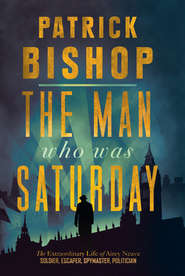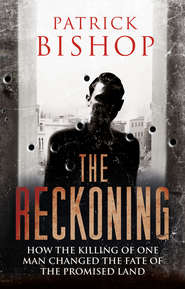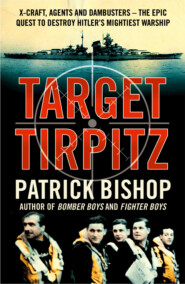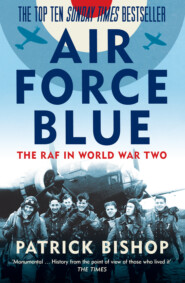По всем вопросам обращайтесь на: info@litportal.ru
(©) 2003-2024.
✖
Bomber Boys
Автор
Год написания книги
2019
Настройки чтения
Размер шрифта
Высота строк
Поля
This was a home-front war and civilians along the outbound and inbound routes to the Continent were present at the opening and closing scenes of the action. During the war years the RAF in Britain grew into the most visible of the services. In the bomber station-cluttered east and north there seemed almost as many airmen and-women as there were civilians. ‘By the time I got there Lincoln had turned blue,’ remembered Reg Payne, a wireless operator who was based at Skellingthorpe just outside the city.
Bomber Command grew and grew as the volunteers arrived in numbers that never slackened even during the darkest hours of its campaign. Behind each man flying, there were many more keeping them in the air. There were fitters and riggers and armourers maintaining the huge aeroplanes. There were WAAFs who drove the crews to their hangars and staffed the operations rooms when ops were on. There were the women who served them their dinner before they took off and, with luck, their breakfast when they returned home. RAF men met and mingled with local women in dance-halls and pubs, flirting with them, sometimes sleeping with them, often marrying them. Homesick young men were adopted by families and would slip away for an afternoon in front of a coal fire in a front parlour that reminded them of the family life they had left behind.
The many Britons who had seen the RAF going into action, droning overhead on their way to and from Germany and France and Italy, relished the sight. They learned of what they did there from the newspapers and BBC radio for whom Bomber Command’s activities provided the main source of good news for much of the war. The tone of the reports was exultant. ‘The Vengeance Begins!’ was the strapline on the Daily Express front-page story of Monday 1 June 1942 announcing the first thousand-bomber raid on Cologne. The sky over the city was ‘as busy as Piccadilly Circus’. One bomber passed over every six seconds and 3,000 tons of bombs were dropped in ninety minutes [The real figure was 1,455 tons]. It was particularly pleasing to report that the official communiqué from Berlin admitted that ‘great damage’ had been done. ‘Germans squeal “havoc, misery”’ was the headline on the story of how the Nazis had reacted to the raid.
The RAF had saved the country from invasion by winning the Battle of Britain. It had failed, it was true, to prevent the Blitz. But now, night after night it was carrying the war to the Reich, paying the Germans back in kind and contributing mightily to the downfall of Hitler and the Nazis.
That was how it was seen by British civilians as they read accounts of devastating attacks on previously obscure towns such as Essen, Duisburg and Gelsenkirchen and great cities like Hamburg and Cologne and, above all, Berlin. This was how it was presented by Harris, a natural propagandist, who strove to create the impression that with each raid the road to victory and peace was one step shorter. This was what was believed by the majority of the men who were flying the aeroplanes. They tended to be bolder and more imaginative than the rest of their contemporaries. Flying was dangerous but they preferred its perils and the relative informality of RAF life to the drudgery of existence as a soldier. In letters and diaries they reveal a high degree of idealism and optimism and a strong sense that they were fighting not only to destroy a present evil but also to lay the foundations of a future good.
In a letter to the father of his friend Andrew ‘Paddy’ Wilson, who was killed during a raid on Düsseldorf in June 1943, Sergeant John Lobban, the sole survivor of the crew, wrote: ‘They died for the greatest of causes, the freedom of the peace-loving nations and I only wish that fate could have let us play a greater part in bringing the war to a close.’ It had been their first operation.
Such idealism is found mainly in the young. Many of the Bomber Boys were barely out of their teens, though the almost constant strain they lived with made them seem older. They were called Dougie and Ron and Ken and Reg and Bill. They came from the middle reaches of society and were strongly marked by their time. In their short lives they had felt the numb emotional pain left by the last war and sensed the mounting dread among their elders as the next one approached. They knew what poverty was and had witnessed the cruelties of interwar capitalism. If there was a dominant political outlook among the crews it was a mildly sceptical socialism and belief in social justice. But overlying it always was a profound sense of duty. None of them set out to destroy German cities and few cared to reflect too closely on the effects of their bombs. But like the rest of their generation, they possessed a patriotism and respect for authority that had barely been dented by their knowledge of the First World War. It was easier for them to do what they did because they tended to believe what they were told about the purpose and progress of their struggle. It was an outstanding peculiarity of the strange new conflict they were engaged in that there was no real measure of gain. Armies could gauge success by the amount of ground taken or the number of enemy killed or captured. Navies could do so by the quantity of enemy tonnage sunk. But how did you judge the achievements of a bombing campaign?
The authorities continually proclaimed the effectiveness of Bomber Command’s actions. Early communiqués created an illusion of extraordinary efficiency, of bombs slanting down on strictly military targets with scientific precision. This optimistic view was based largely on the reports of the pilots dropping the ordnance, an unreliable measure as it was to turn out. It was only after two years of war, when a report based on an analysis of aerial photographs revealed the hopeless inaccuracy of most bombing, that tactics and equipment improved and the gap between reality and propaganda began to close. By the end of the war Bomber Command could obliterate any target it wished to and did so, sometimes flattening towns whose military importance was minuscule. But the value of such destruction was always open to question and afterwards there was disagreement over what it was that Bomber Command had achieved.
Harris lived another forty years after the last bomb was dropped. Right until his death he fought to persuade the world that his Command’s contribution to victory had been decisive. His arguments were based not so much on the data provided by the American and British official surveys of damage conducted after the war, but more on the word of Hitler’s munitions minister, the silky and self-interested Albert Speer. The surveys themselves failed to settle the arguments that raged throughout the war over how bomber power should be applied and started a new round of controversy. The questions of how much material harm bombing did to the German war effort, and whether the energy and sacrifices involved were worth it, have never been fully answered and never will be.
It was even more difficult to determine the psychological effect of bombing. Bombs were spiritual as much as physical weapons. Air strategists had been arguing since aeroplanes were invented that the moral power of bombing was as great as anything it did to factories or homes, perhaps much greater. By destroying the will of workers to work, air attacks could do as much effective damage as they did when they smashed up a steelworks or assembly line.
This convenient belief grew as it became clear that pre-war assumptions about bombing accuracy were absurdly optimistic. The first bombs were aimed at small targets and hit nothing. Better then to aim at a large target and hit something – anything – for in a built-up area no bomb would be wasted. Even if a bomb missed the factory it was aimed at, the chances were it would hit the home of someone who was employed there. It might kill him and his family. Death or fear of death would keep him away from work. If enough bombs were dropped, so the theory ran, workers might eventually turn against their rulers and force them to stop fighting.
Even before the war the evidence available from the German and Italian bombardments of Madrid and Barcelona suggested that this was not necessarily so. Britain’s own experience of the Blitz pointed to a more startling conclusion: that aerial bombardment could actually toughen resolve and deepen resistance. For much of the war, there was a prevailing belief that Germany would crack if only it was hit hard and often enough. The RAF’s pre-war professional judgement that in a totalitarian state, coercion trumped public opinion, was soon forgotten in the desperation to achieve results.
The lack of any accurate understanding of what the campaign was achieving was characteristic of the oddly disconnected way in which the war was waged. Even those dropping the bombs felt they were engaged in a surreal exercise. Looking down from a Lancaster or Halifax at Essen or Berlin from 20,000 feet you saw nothing that connected you to the earth you knew, only a diabolical son et lumière of smoke and fire. ‘I would try to tell myself … that this was a city,’ wrote Don Charlwood, an Australian navigator with 103 Squadron. ‘A place with the familiar sights of civilization. But the thought would carry little conviction. A German city was always this, this hellish picture of flame, gunfire and searchlights, an unreal picture because we could not hear it or feel its breath. Sometimes when the smoke rolled back and we saw streets and buildings I felt startled. Perhaps if we had seen the white, upturned faces of people, as over England we sometimes did, our hearts would have rebelled.’
Harris liked to call the successive phases of the air war ‘battles’. There was a Battle of Hamburg, a Battle of the Ruhr, a Battle of Berlin. But they were not battles as most people understood the word. There was not one enemy, waiting and visible, but many. The crews were constantly at the mercy of the weather and mechanical failure. On the approach routes and over the targets they faced searchlights, flak and night-fighters. There was no relaxation on the way home. The last minutes were sometimes as dangerous as the time over target as the skies above the base filled with aircraft, many of them sieved with flak and cannon holes, clinging to the air with their last few gallons of petrol, praying for the signal to touch down.
Flying in bombers was an extraordinarily dangerous activity. Harris, with his usual harsh honesty, asked people to bear in mind that ‘these crews, shining youth on the threshold of life, lived under circumstances of intolerable strain. They were in fact – and they knew it – faced with the virtual certainty of death, probably in one of its least pleasant forms.’
Altogether 55,573 Bomber Command aircrew – British, Canadian, Australian, New Zealanders and others – were killed. That is out of a total of 125,000 who served. Another 8,403 were wounded and 9,838 taken prisoner. In simple terms that means 44.4 per cent of those who flew, died. The real picture was rather grimmer. Many of those included in the overall aircrew figure were still training when the war ended and never saw action. According to one study, the true figure is closer to 65 per cent. The chances of death then, were appallingly high, far higher than those facing soldiers and sailors. The life expectancy of an airman was considerably shorter even than that of a junior infantry officer on the Western Front in 1916.
To Peter Johnson who swapped a cushy instruction post for operational flying, the enterprise sometimes seemed like the Charge of the Light Brigade, over and over again.
It was no wonder that crews discussed obsessively the odds on their survival and tried to discern some pattern in the tapestry of death. It was very confusing. Some ‘sprog’ crews fresh from a training unit got the ‘chop’ first time out. But so did veterans on their last but one trip of their thirty-operation tour. Good pilots died inexplicably and poor ones blundered through. It was all down to luck and Lady Luck, capricious tart that she was, had to be wooed and cosseted constantly. The modern young men in the bombers were as superstitious as mediaeval peasants. Final preparations would be thrown into chaos if someone lost his lucky silk stocking or remembered he had forgotten a pre-operation ritual. They also developed a mediaeval fatalism. Flying was ‘dicing’ and death was ‘the reaper’.
But despite death’s towering presence, it could still seem curiously remote. It was a common experience to see an aeroplane just like your own, ahead of you in the bomber stream, suddenly explode as flak ignited hundreds of gallons of petrol and thousands of pounds of explosive. It was not unusual to watch as a night-fighter nosed upwards beneath the pregnant belly of an unsuspecting neighbour and with one squirt of its vertically-directed guns sent it screaming down.
After witnessing these dreadful sights, crews were often struck by the complexity and selfishness of their feelings. ‘Suddenly,’ wrote Harry Yates, a Lancaster pilot, ‘ahead of us in the stream a vic of three kites was consumed in a prodigious burst of flame which immediately erupted outwards under the force of the secondary explosion. The leader had been hit in the bomb bay, the others were too close. No one could have survived, I knew. There was no point in looking for parachutes. I flew on straight and level, Tubby standing beside me, both of us dumbstruck by the appallingly unfair swiftness and violence of it all. But there was still that deeply-drawn breath of relief that somebody else, and not oneself, had run out of luck. And hard on the heels of that was a pang of guilt. One grieved for whoever was in the kites and wondered if friends might not be coming home …’
For all the danger, operations involved little that could be described as exciting or could later be interpreted as glamorous. There were stretches of tedium. For wireless operators and bombaimers there was little to do for much of the time. Only the navigator and the pilot were kept permanently occupied and there was not much fun in flying bombers. Piloting a Lancaster was nothing like skidding across the skies in a Spitfire. It was a task rather than a pleasure, requiring endless tiny adjustments and constant vigilance. Guy Gibson, the leader of the Dams Raid, compared bomber pilots to bus-drivers.
There was a complete absence of comfort. The rear gunner, stuck at the ‘arse end’ of a Lancaster, froze. The wireless operator, stuck next to the port inner engine, often roasted. Everyone was swaddled in multiple layers of clothing surmounted by parachute harness and Mae West lifejacket. It was hard work moving around the cramped, equipment-stacked interior, where every edge was sharp and threatened injury.
On the ground life was far removed from the ease of the RAF’s pre-war existence and there were few of the comforts or entertainments available to the fighter pilots of 1940 when they touched down at the end of the day. Writing to his wife from his first squadron, Flying Officer Reg Fayers was anxious to dispel any idea that the organization he had joined resembled ‘Max Aitken’s RAF’. Aitken, Lord Beaverbrook’s son, had fought in the Battle of Britain and was a model of style and sophistication. ‘You are fastidious and sweetsmelling cleanliness,’ Fayers declared. ‘You are gentle, you are comfort … the RAF is opposite in all respects.’
The defining sound of Bomber Command life was not the cheerful blare of the mess gramophone but the patter of rain on a Nissen hut roof. The pervading smell was not the whiff of expensive scent but the reek of coke from a smoky stove. Opening the doors of their quarters the crews looked out not at the green, upholstered Sussex hills or the fertile fields of the Weald but the vast skies and watery steppes of Lincolnshire.
Fighter pilots went to the pub by car. Bomber Boys travelled by bike or bus. They drank flat, weak beer in drab pubs and dance-halls where they competed for the favours of young women war-workers. Sex was in the air but when it took place it was often urgent and utilitarian. What they really wanted was love and it flared up often, as fierce and incandescent as the pyrotechnics that marked the targets they bombed. Sometimes it was just as ephemeral.
But once on ‘ops’, the world of lovers, friends and families beyond the base dwindled and faded, to be replaced by a different reality. The future stretched no further than the next few hours. Life was reversed. Night became day and day became night, the time when the crews went to work. Then, to each crew member the only people who mattered were those around him. There were only seven people in existence and the universe had shrunk to the size of a bomber plane.
1 Learning the Hard Way (#ulink_4508ab8e-b53a-58d3-80fc-40f13df71105)
On the morning of Sunday 3 September 1939, at bases all over Britain, ground and air crews stood by for the announcement that after many false alarms they were finally to be launched into battle. At Scampton, ‘Sunny Scampton’ as it was wryly nicknamed on account of the usually dismal Lincolnshire weather, the men of ‘A’ Flight, 89 Squadron, were smoking and chatting in the flight commander’s office while they waited for the prime minister to speak on the radio. At 11 a.m. the talking stopped and the room filled with the low, apprehensive voice of Neville Chamberlain telling them that, as of that moment, a state of war existed between Britain and Germany.
Until then, the flight commander, Anthony Bridgman, had been a study in unconcern. Now he took his feet from his desk, exhaled a slow stream of cigarette smoke and spoke, ‘quietly and rather strangely’ according to one who was present, to his men. ‘Well boys, this is it,’ he said. ‘You had better all pop out and test your aeroplanes … there will probably be a job for you to do.’
There was. In the early afternoon they were called to the lecture room where the squadron’s CO, Leonard Snaith, a distinguished pilot whose gentle manner set him apart from the boisterous, public-school ethos of the pre-war RAF, announced ‘we are off on a raid’. The targets were German pocket battleships, believed to be lying in Wilhelmshaven harbour, the great heart-shaped North Sea inlet. Their orders were to bomb them. If the ships could not be found, they were allowed to attack an ammunition depot on the land. The six crews detailed to the task were warned that ‘on no account’ were they to hit civilian establishments, either houses or dockyards, and that ‘serious repercussions’ would follow if they did so.
They surged to the crew room to climb into their kit and wait for a lorry to take them to the aircraft. They were flying in Hampdens, up-to-date, twin-engined monoplane medium bombers with a good range and a respectable bomb-carrying capacity. They had a bulbous but narrow front fuselage, only three feet wide, and a slender tail that gave them an odd, insect look. It was cramped for the four men inside, but the speed and handling made up for it.
Before they could leave, news came through that the initial take-off time of 15.30 had been put back. The men lay outside on the grass, smoking and thinking about what lay ahead. Another message arrived saying there had been a further delay, provoking a chorus of swearing. By now everyone’s nerves were fizzing. One pilot, despite a reputation for cockiness, found his ‘hands were shaking so much that I could not hold them still. All the time we wanted to rush off to the lavatory. Most of us went four times an hour.’
At last the time came to board the lorry and just after 6 p.m. the engines rumbled into life and the Hampdens bumped down the runway. For all their training, few of the pilots had ever taken off with a full bomb load before. The aircraft felt very heavy with the 2,000 pounds of extra weight but they lumbered into the air without mishap and set course over the soaring towers of Lincoln cathedral, over the broad fields and glinting fens and rivers of Lincolnshire, and out across the corrugated eternity of the North Sea for Germany.
As they approached Wilhelmshaven, the weather went from poor to atrocious. The gap between the grey waves and the wet cloud narrowed from 300 to 100 feet. Gun flashes could be seen through the murk but there was no telling where they came from.
Eventually, Squadron Leader Snaith’s aircraft swung away to the left. The appalling conditions and the impossibility of knowing precisely where they were had persuaded him there was no point in carrying on. The initial disappointment of one pilot gave way to the realization that Snaith was right. ‘For all we knew,’ he wrote, ‘we were miles off our course. The gun flashes ahead might have been the Dutch Islands or they might have been Heligoland.’
They dumped their bombs into the sea and headed for home. By the time they crossed the coast at Boston it was dark. Most of the crews had little experience of night flying and one got hopelessly lost. Luckily, the moon picked up a landmark canal and they followed it back to Scampton, landing tired, and rather disillusioned, at 10.30 p.m. ‘What an abortive show!’ wrote the captain of the errant aircraft. ‘What a complete mess-up! For all the danger we went through it couldn’t be called a raid, but nevertheless we went through all the feelings.’
But at least everyone had got back alive. If Bomber Command’s first offensive operation was a disappointment, the second was a disaster. On 4 September more attacks were launched against German warships off Wilhelmshaven and further north, at Brunsbüttel, in the mouth of the Kiel Canal. A force of fourteen Wellingtons and fifteen Blenheims set off. The weather was dreadful. Ten aircraft failed to find the target. The Blenheims managed to reach the pocket battleship Admiral Scheer and the cruiser Emden at Wilhelmshaven. They even landed three bombs on the Scheer. The bombs failed to explode. The Emden was damaged when a stricken bomber crashed on to it. But five of the attacking aircraft were destroyed, most by flak from the fleet’s anti-aircraft guns.
Some of the Wellingtons claimed to have located targets to bomb at Brunsbüttel but if they did they caused them little harm. Four aircraft were shot down by German fighters. A gross navigational error meant that two bombs were dropped on the Danish town of Esbjerg, 110 miles to the north, killing two innocents. The day’s efforts had achieved nothing and resulted in the loss of nearly a quarter of the aircraft dispatched.
These initial efforts displayed many of the myriad weaknesses of Bomber Command as it set out to justify the extraordinary claims that had been made in its name in the years between the wars. The operations were based on sketchy intelligence and preceded by only the most perfunctory of briefings. The aircraft were the best the RAF could offer but the navigation equipment available to guide them to their targets was primitive, and some of the bombs they dropped were duds. The training the crews had received, long and arduous though it had been, had still not properly prepared them for the job. And the tactics they were following were clearly suspect, given the losses that had been sustained.
On the other hand, the episode did provide a demonstration of the potential of Bomber Command’s underlying strength. The crews had shown a powerful ‘press on’ spirit, with fatal results in the case of most of those trapped in the seven aircraft that went down. Despite the paltry results, nothing could be inferred about the quality of the airmen. The man whose memoirs provide the basis for the account of the first raid, the pilot of the Hampden who got lost, was the twenty-year-old Guy Gibson, who three and a half years later was to lead the triumphant Dams Raid. At the time, though, these first operations served mainly to expose the RAF’s weakness and to reveal the huge gap between what a bomber force was supposed to do and what it could in fact achieve.
In their short life, bombers had gained an awesome reputation for potential destructiveness. The prospect of unrestricted air warfare tinged the mood of the interwar world with quiet dread. It cast the same shadow of fear and uncertainty over life as the thought of nuclear holocaust did in the post-war years. The sense of doom was fed by a tide of alarming articles and books.
A novel, 1944, published in 1926 was typical of the genre. The fact that its author, the Earl of Halsbury, had served on the Air Staff’s Directorate of Flying Operations in the First World War appeared to lend particular weight to its arguments. The tale was told in the brusque, conventional prose of contemporary thrillers, but the message was revolutionary. Its hero, Sir John Blundell MP, is regarded by his colleagues as a crackpot for his insistence that another world war is inevitable. The next conflict, he believes, will bring about ‘the total obliteration of civilization not more nor less. Total obliteration, phutt, like a candle.’
He warns anyone who will listen that in ‘not more than twenty years’ fleets of bombers will be roaming the skies of Europe, dropping poison gas. The country’s air defences will prove useless. The government will be paralysed. Lacking leadership or a militaristic tradition to maintain discipline, people will turn on each other. When the first raid occurs, Sir John’s son Dick is sitting down to dinner at the Ritz with his girlfriend Sylvie. ‘Above the night noises of a great town could be heard the faint but unmistakeable hum of aeroplanes. Presently they became louder and there was an uncomfortable hush throughout the restaurant. To Dick … the noise seemed to be coming from everywhere. Trained to appreciate such things, he knew there must be an immense number of machines. Somewhere to the south came the sound of a futile anti-aircraft battery … like a swarm of locusts a mass of aeroplanes was just discernible, lit up by the searchlights, as yet mere specks in the sky. More anti-aircraft guns were heard coming into action, somewhere down the river. Bursting shells winked like fireflies in a tropical forest … the raiders were through and over London … they had easily broken through the carefully-prepared but utterly inadequate defence that met them.’
Dick and Sylvie manage to escape the capital. On their way westwards they see anarchy and cruelty everywhere. A band of proletarian refugees from Plymouth turn cannibal, preying on stragglers who stray near their Dartmoor hideout. Almost everyone behaves badly. In a country mansion, upper-class loafers meet death in a last orgy of drink and drugs. At one point the pair run into a crowd of scavengers. ‘[It] was not made up of the English [Dick] had known. They were a new race, a hard, grim, cruel race, changed completely by days of want, total lack of discipline and above all by the complete dissolution of the bonds which knitted their civilization into a kindly, altruistic society.’
Halsbury was serious. He claimed his assertions were based on current scientific fact.
Official projections of what unrestricted air war might mean were scarcely less alarming than his lordship’s imaginings. They took as their starting point the results of German air raids on Britain in the Great War, which started with Zeppelin attacks in January 1915 and continued with raids by Gotha and Giant bombers. Altogether, they killed 1,413 people and injured 3,407. The great majority of the casualties were civilians. From this data it was calculated there would be fifty casualties for every ton of bombs dropped. In 1937 the Committee of Imperial Defence, which brought together the country’s most senior airmen, soldiers, sailors and bureaucrats, was informed by its experts that the Germans had the means to maintain an all-out air assault on Britain for sixty days. This would result in the deaths of up to 600,000 people and serious injury to 1.2 million.
A year later the Ministry of Health estimated that between 1 million and 2.8 million hospital beds would be needed to deal with casualties. The huge numbers of dead would have to be interred in mass graves. In April 1939 a million burial forms were sent out to local councils.
Like Halsbury, the government also assumed that the public’s nerve would fail. The scattered bombing of the previous war had produced flickers of panic and despondency. Concentrated attacks were expected to trigger widespread hysteria. A report to the Committee of Imperial Defence in 1931 proposed throwing a police cordon around London to prevent a mass exodus and discussions began in 1937 to recruit 20,000 reserve constables to keep order in the capital. It was thought that the first duty of the army, should Germany attack, was to ‘maintain confidence, law and order among our civil population before attempting to fulfil any other role’. In the spring of 1939 the War Office warned army commanders of the sort of work their men might be expected to carry out. In one scenario, ‘crowds without food have taken refuge in the open land in the suburbs. Civil authorities have organized soup kitchens which are being rushed by hungry people. Troops are required to restore order and organize queues.’
It was suggested that psychiatric casualties might outstrip physical casualties by three to one. In 1938 a committee was formed of senior psychiatrists from the London teaching hospitals and clinics to plan wartime mental health requirements. Its report to the Health Ministry proposed a network of centres providing immediate treatment in the bombed areas, outpatient clinics and roving teams of adult and child counsellors.
These dire predictions were a reflection of a fear that gripped everyone. ‘We had entered a period,’ Churchill wrote later, ‘when the weapon which had played a considerable part in the previous war had become obsessive in men’s minds. Ministers had to imagine the most frightful scenes of ruin and slaughter in London if we quarrelled with the German dictator.’











